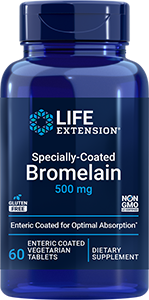 | July 21, 2009 | Carnosine combats cataracts | | In the July 28, 2009 issue of the journal Biochemistry, Italian researchers report that the dipeptide carnosine shows promise not only in preventing cataracts but also in helping to treat the condition. Cataracts, which are characterized by a clouding of the eye's lens, are a major cause of visual impairment among older men and women, and surgery is currently the only effective treatment. Enrico Rizzarelli of the University of Catania and his colleagues tested the effects of D- and L-carnosine on bovine cultured alpha-crystallin, the major structural protein in the lens of the eye. The cultures were treated with guanidine, a compound that is known to cause cataracts via the formation of alpha-crystallin fibrils. Co-incubation of the cultures with carnosine helped inhibit fibrillation, and the addition of carnosine to pre-existing fibrils was found to almost completely dissolve them. In another experiment, cultured rat lenses were exposed to two concentrations of guanidine with or without pretreatment with L-carnosine. While guanidine alone caused significant lens opacification after 24 hours, with further loss occurring after 72 hours, pretreatment with L-carnosine prevented lens opacification by 50 to 60 percent in cultures that received either guanidine concentration. Subsequent treatment of opaque lenses with L-carnosine resulted in time-dependent recovery of transparency. Lenses that had been previously treated with guanidine with or without L-carnosine showed 60 percent recovery of transparency after 48 hours. "Taken together, carnosine treatments showed a visible reversion of the effects of guanidine, either in preventive treatments or as recovery after lens opacification, supporting the notion that lens protein conformational changes, observed also in our study, are strongly associated with lens opacification and can be somehow reversible," the authors write. "However, it is worth noting that carnosine is also an antioxidant compound and its ability to protect lenses from opacification can be also attributed to the nitric oxide (NO) direct quenching effect of carnosine or inhibition of inducible nitric oxide synthase (iNOS) induction under stressing conditions." "Carnosine is also present in the eye lenses at a high level, therefore, our result supports the hypothesis that a possible decrease during aging, as it is known in the muscle, could contribute to age-related cataractogenesis," they note. | |  |
| Treatment for cataracts is reactive: when cataracts adversely impact vision, they are surgically removed and replaced with an implanted lens. Cataract surgery is very effective and has a high success rate. Nutritional therapy can prevent the onset of cataracts, particularly because proven anti-cataract drugs are not available. Intervention strategies should address the underlying causes of cataracts: oxidative stress, free radical production, the breakdown and aggregation of lens proteins, dysfunction of metabolism in the lens, and inability to maintain a healthy ocular environment. Nutritional therapy is available for each of these underlying causes. Proteins deep in the lens are generated during embryogenesis and must retain functionality for many decades. The inability to maintain protein stability over time leads to formation of a nuclear cataract (the predominant form). Once the lens forms (embryologically), proteins are only synthesized in the outermost fiber cells close to the lens surface. Accumulated damage to the proteins causes loss of enzymatic activity and increases the likelihood of protein aggregation, a component of cataract formation. The glycation (glycosylation) process can change (denature) lens proteins and significantly contribute to diabetic cataract formation and retinopathy. Glycation occurs when proteins react with sugars and form advanced glycation end products (AGEs), essentially, proteins strongly (covalently) bind to sugars, compromising the function of that protein. AGEs are biochemically altered proteins, DNA, and lipids with altered physiological properties. Nutritional supplements that may decrease breakdown of lens proteins and help maintain cellular metabolism include vitamin B6, acetyl-L-carnitine, aminoguanidine, bioflavonoids, inositol, and carnosine. |
|  | Super Booster Softgels with Advanced K2 Complex  | | Despite incredible scientific validation, many people still do not take vital life-sustaining nutrients because they don’t want to swallow so many pills. This problem has been solved with a one per-day softgel that includes more health-promoting nutrients than any other supplement. The Life Extension Super Booster™ contains critical oil-based nutrients that cannot be incorporated into dry-powder based formulas like the Life Extension Mix™. The Super Booster has been upgraded to provide higher doses of the most effective form of vitamin K known as menaquinone-7. | | |   | | A specially coated bromelain formulation has been well-studied for its ability to help reduce the expression of inflammatory factors. Approved for use in Germany since 1993, bromelain is a proteolytic enzyme extracted from pineapple stems. Recent studies suggested its proteolytic activity can contribute to supporting better joint health by aiding in maintaining healthy pathways of chemicals related to normal tissue function. Now, sufferers of unwanted joint changes can benefit from evidence that specially coated bromelain-based formulations may significantly help promote healthy joint function. | | | |  | | Life Extension Update | | What's Hot | | Life Extension magazine | |

